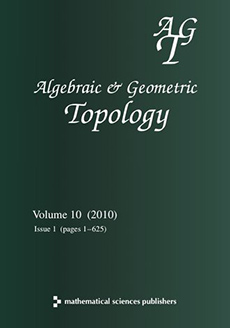Abstract
Let be a (topological) compact closed surface of genus two. We associate to each translation surface a subgraph of the curve graph of . The vertices of this subgraph are free homotopy classes of curves which can be represented either by a simple closed geodesic or by a concatenation of two parallel saddle connections (satisfying some additional properties) on . The subgraph is by definition –invariant. Hence it may be seen as the image of the corresponding Teichmüller disk in the curve graph. We will show that is always connected and has infinite diameter. The group of affine automorphisms of preserves naturally , we show that is precisely the stabilizer of in . We also prove that is Gromov-hyperbolic if is completely periodic in the sense of Calta.
It turns out that the quotient of by is closely related to McMullen’s prototypes in the case that is a Veech surface in . We finally show that this quotient graph has finitely many vertices if and only if is a Veech surface for in both strata and .
Citation
Duc-Manh Nguyen. "Translation surfaces and the curve graph in genus two." Algebr. Geom. Topol. 17 (4) 2177 - 2237, 2017. https://doi.org/10.2140/agt.2017.17.2177
Information





